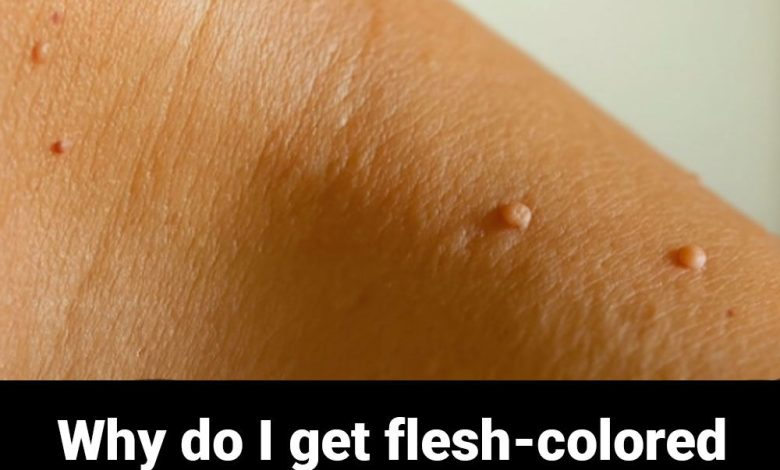Why do I get flesh-colored moles on my neck or armpits, and how do I get rid of them? Experts explain.

🩺 Skin Tags: What They Are, Why They Form, and How to Remove Them Safely
Skin tags—medically known as acrochordons—are small, soft, skin-colored growths that often appear in areas where skin rubs together: think neck, underarms, eyelids, groin, and beneath the breasts.
Though harmless and usually painless, they can be annoying or impact how you feel about your skin. If you’ve found yourself wondering why they show up and how to deal with them, here’s your clear, no-fuss guide.
🔍 What Causes Skin Tags?
Skin tags are made of loose collagen fibers and tiny blood vessels, wrapped in a layer of skin. They’re not contagious or cancerous, but several factors can make them more likely to appear:
Friction & Rubbing
Anywhere skin constantly brushes against skin—or clothing—is a prime spot for tags to develop, especially in high-friction zones like the underarms and neck.
Genetics
If your parents or siblings have skin tags, you may be more likely to get them too—your genes can play a role.
Hormonal Shifts
Changes in hormone levels (like during pregnancy or puberty) or conditions like insulin resistance can stimulate skin growth, sometimes leading to tags.
Getting Older
Skin tags are more common after age 40, often due to natural changes in the skin’s elasticity and structure.
Weight & Metabolic Health
More skin folds mean more friction. People who are overweight or dealing with metabolic syndrome may be more prone to developing skin tags.
Type 2 Diabetes
There’s a well-documented link between skin tags and insulin resistance—skin tags can sometimes be a subtle signal of underlying metabolic imbalances.
✂️ Safe Ways to Remove Skin Tags
Most skin tags don’t need treatment, but some people choose removal for cosmetic or comfort reasons. If that’s you, always check in with a dermatologist first—especially if the tag is large, irritated, or looks different from your others.
Here are five safe and effective removal options:
| Method | What It Does |
|---|---|
| Cauterization | Uses controlled heat to burn off the tag—fast and usually leaves minimal scarring. |
| Cryotherapy | Freezes the tag with liquid nitrogen—it falls off naturally over a few days. |
| Excision | A quick snip under local anesthesia—best for larger tags or if diagnosis is unclear. |
| Laser Removal | Uses focused light to remove the tag with precision—great for delicate areas. |
| Ligation | Ties off the blood supply to the tag—it dries up and falls away in a few days. |
🧴 Caring for Skin After Removal
Once a skin tag is removed, proper care ensures smooth healing and minimal risk of irritation:
- Keep the area clean and dry
- Apply any recommended ointments to prevent infection
- Avoid picking, scratching, or rubbing
- Protect the area from sun to avoid dark spots
🚨 When to See a Dermatologist
While most skin tags are benign, it’s wise to get them checked if you notice:
- Sudden or fast growth
- Bleeding or crusting
- Pain or significant itching
- Changes in color or shape
These signs could point to a different kind of skin condition that needs medical evaluation.
💡 In Summary
Skin tags are incredibly common and usually nothing to worry about. But if they’re bothering you—physically or emotionally—there are expert-backed, safe options for removal. Skip the DIY tricks and speak to a professional for the best results.
Let your skin be a place of comfort—not discomfort.



